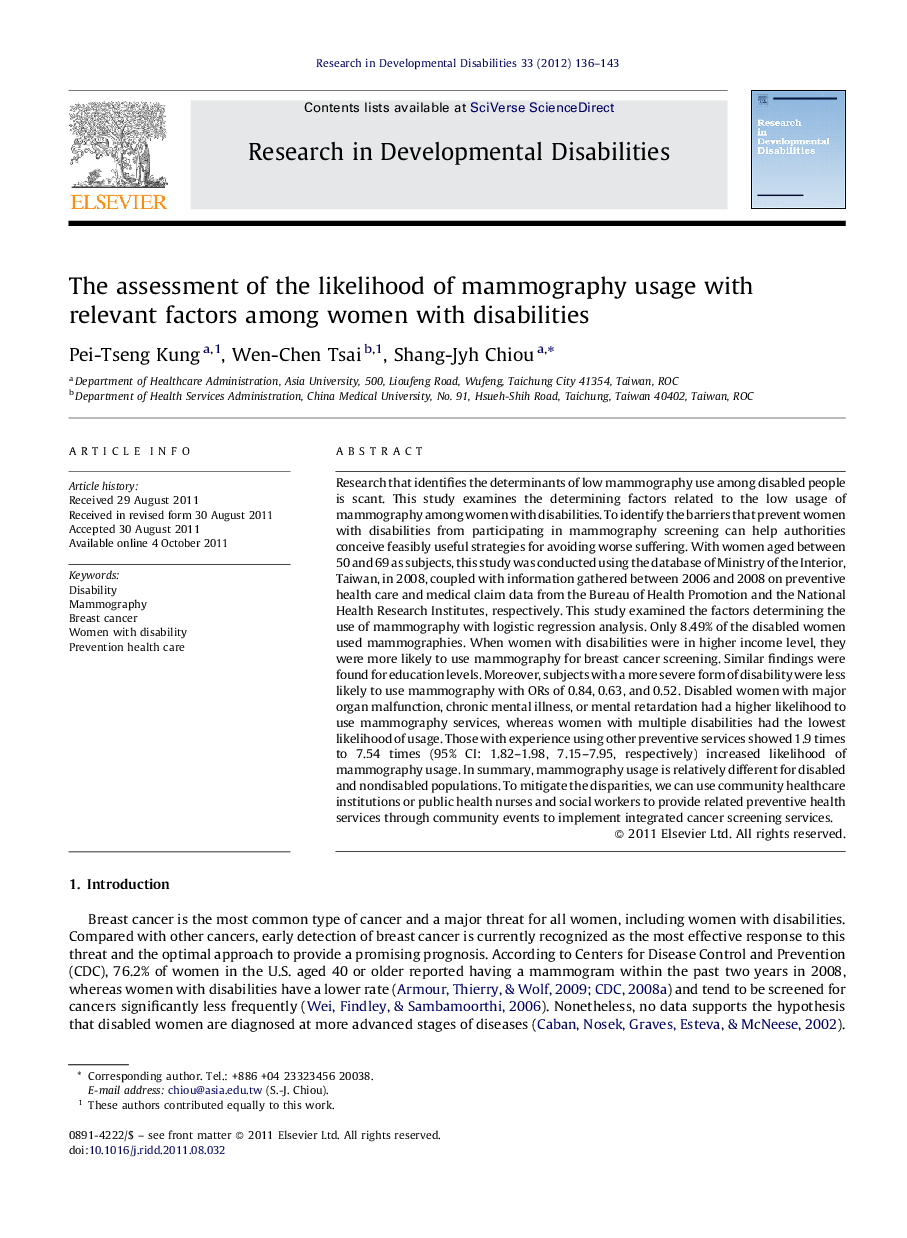| Article ID | Journal | Published Year | Pages | File Type |
|---|---|---|---|---|
| 371635 | Research in Developmental Disabilities | 2012 | 8 Pages |
Research that identifies the determinants of low mammography use among disabled people is scant. This study examines the determining factors related to the low usage of mammography among women with disabilities. To identify the barriers that prevent women with disabilities from participating in mammography screening can help authorities conceive feasibly useful strategies for avoiding worse suffering. With women aged between 50 and 69 as subjects, this study was conducted using the database of Ministry of the Interior, Taiwan, in 2008, coupled with information gathered between 2006 and 2008 on preventive health care and medical claim data from the Bureau of Health Promotion and the National Health Research Institutes, respectively. This study examined the factors determining the use of mammography with logistic regression analysis. Only 8.49% of the disabled women used mammographies. When women with disabilities were in higher income level, they were more likely to use mammography for breast cancer screening. Similar findings were found for education levels. Moreover, subjects with a more severe form of disability were less likely to use mammography with ORs of 0.84, 0.63, and 0.52. Disabled women with major organ malfunction, chronic mental illness, or mental retardation had a higher likelihood to use mammography services, whereas women with multiple disabilities had the lowest likelihood of usage. Those with experience using other preventive services showed 1.9 times to 7.54 times (95% CI: 1.82–1.98, 7.15–7.95, respectively) increased likelihood of mammography usage. In summary, mammography usage is relatively different for disabled and nondisabled populations. To mitigate the disparities, we can use community healthcare institutions or public health nurses and social workers to provide related preventive health services through community events to implement integrated cancer screening services.
► Usage probability increases with higher income or education level. ► Experience in other preventive services increases likelihood of mammography usage. ► Those with comorbidities and in a severe state of disability decrease the usage. ► We should improve clinical preventive services to help the specific groups of women. ► Providing more aggressive and comprehensive strategies promote this service.
